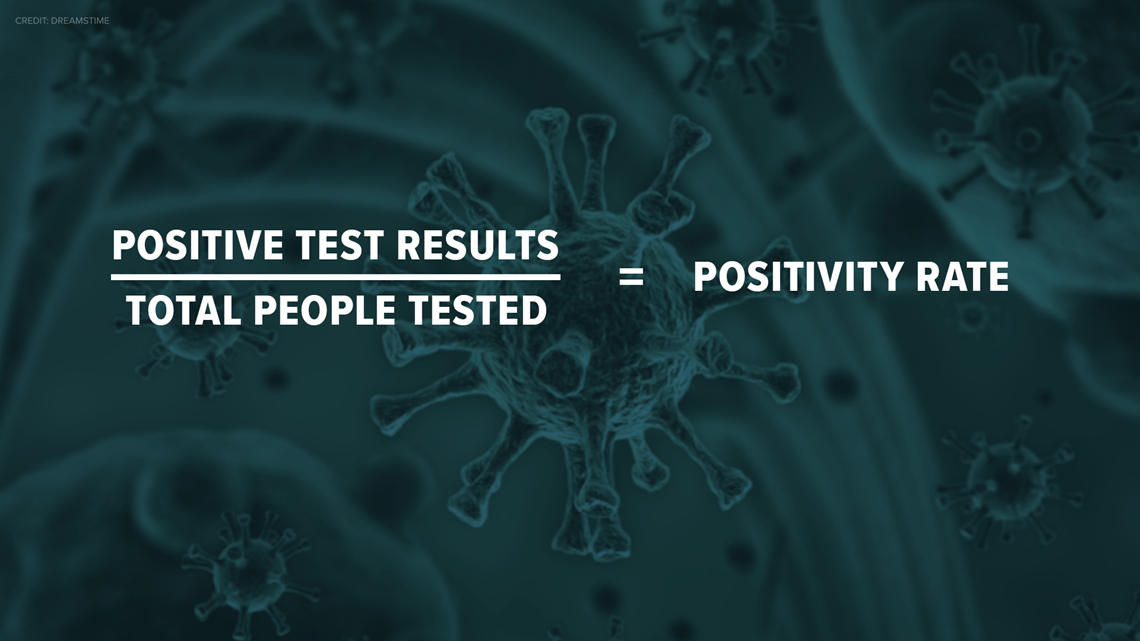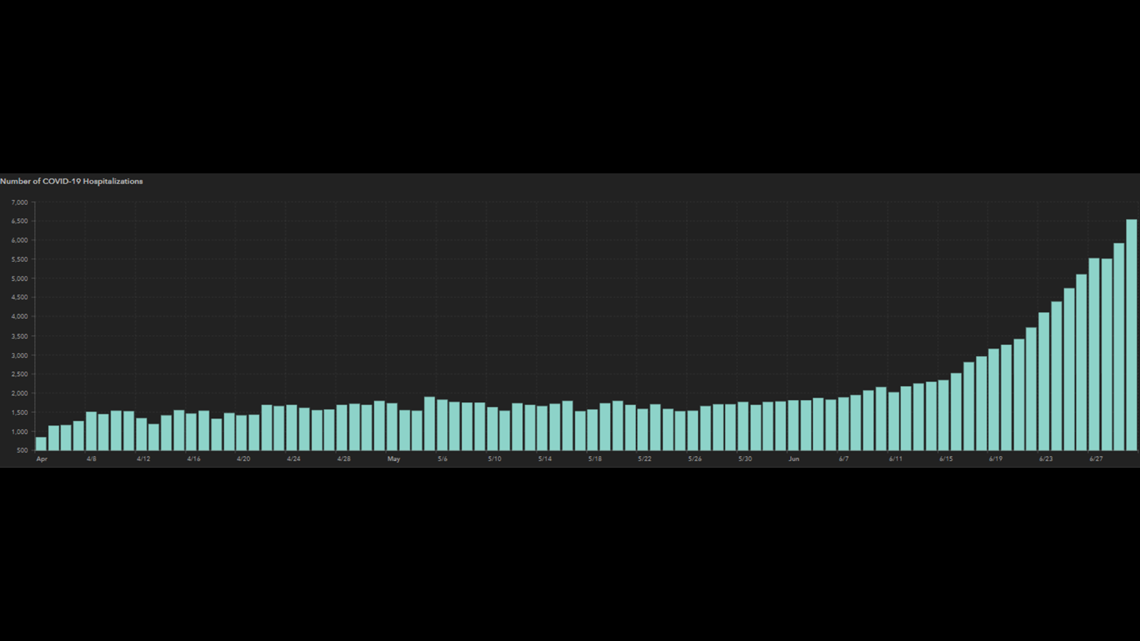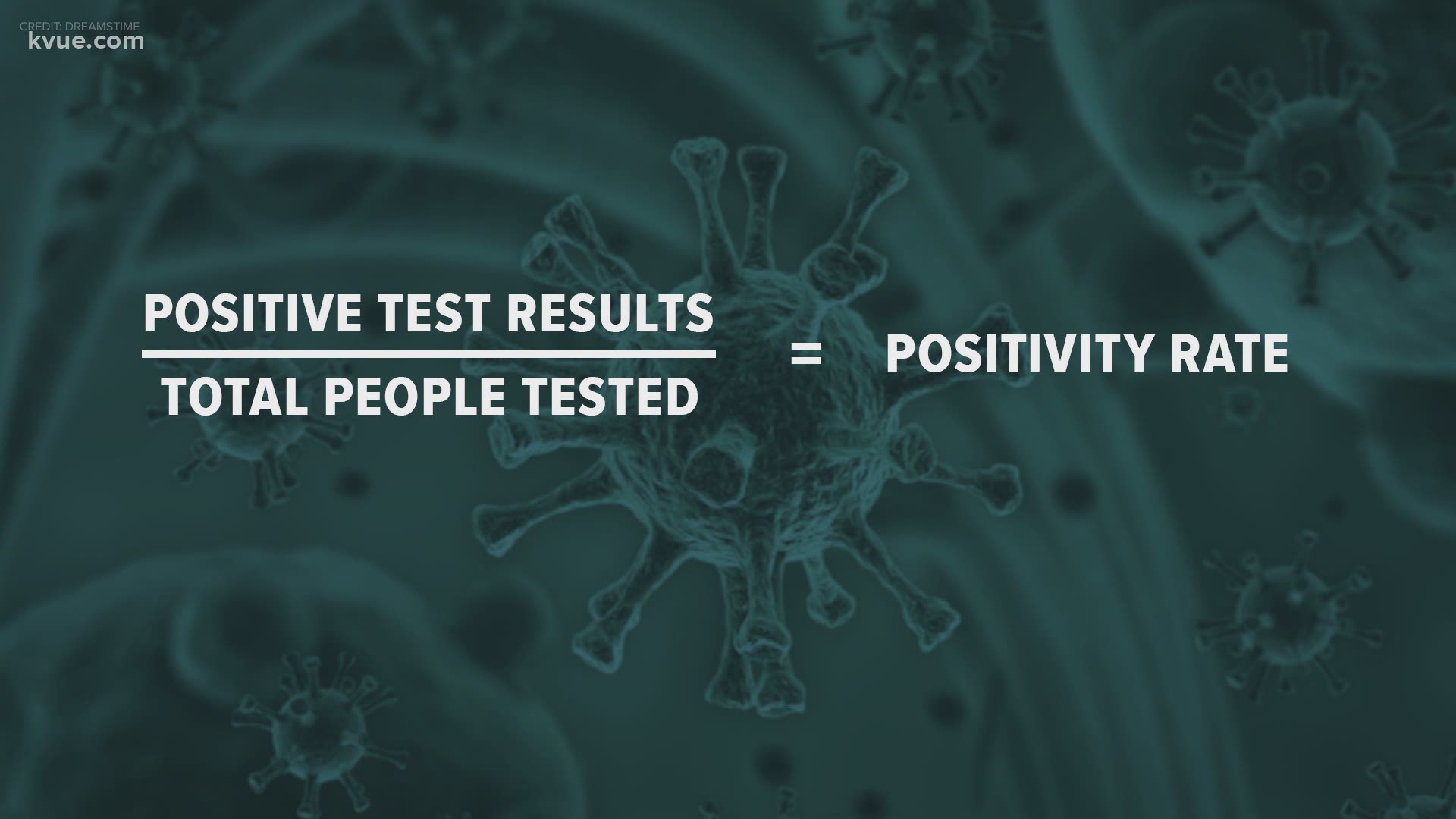DALLAS — In Friday's White House Coronavirus Task Force meeting, Dr. Deborah Birx showed a graphic with a harrowing statistic for North Texas: the Dallas-Fort Worth metro area had one of the highest positivity rates in the nation over the previous seven days.
Not only that but Texas' other three large metro areas – Austin, Houston and San Antonio – were also in the top five.
Texas had four of the top five positivity rates in America over the seven days preceding Fridays news conference. Austin ranked highest in the nation, Houston ranked third, Dallas-Fort Worth was fourth and San Antonio was fifth.
Watch the briefing below:
But what does the positivity rate represent? And why is that important?
The positivity rate is a metric which health authorities are using, where the number of positive test results is divided by the number of total tests administered, essentially giving a percentage of COVID-19 positive diagnoses.


For context, Gov. Greg Abbott's originally said he considered a 10% positivity rate a "red flag" regarding state closures in Texas.
"If you were to go back earlier in the April timeframe, you would have seen that the positivity test rate was closer to 10%. In fact, sometimes over 10%," Abbott said. "If the positivity test rate is more than 10%, that's one of those red flags that we begin to look at, not if it's just a one-off day of testing more than 10% positive, but if there are multiple days that a trend line begins."
Birx described the measurement as a good "alert system that we can trust" during a visit to Dallas with Vice President Mike Pence on Sunday.
The state surpassed a 14% positivity rate again on Tuesday as Dallas-Fort Worth is in the midst of an ever-higher, record-breaking number of new cases being reported.
Tarrant County saw a new record number of cases again Wednesday as 606 more people were confirmed to have the novel coronavirus. The county had broken a record just the day before with 605 new cases.
State health officials reported 6,975 new positive cases of COVID-19 Tuesday, double what the state had reported eight days before when 3,280 new single-day cases were reported on June 22, according to data from the state health department.
And 16 days before -- on June 14 -- the state reported 1,843 new positive cases.
Dallas County has seen a record of new daily highs in the past week, passing 600 daily cases on Tuesday. That day was also the county's deadliest day so far as 20 more victims were reported, raising the death toll to 373 people since tracking began in March.
Dallas County Judge Clay Jenkins said the record number 601 new cases came just 20 days after the county had first surpassed 300 daily cases.
Across North Texas, hospitalizations are way up as well. In the past month, hospitalizations rose for the region by 120% as it reached a new record high number of 1,375 COVID-19 patients in local hospitals, state data shows.


The state has seen an even more dramatic rise in hospitalizations across Texas in June. As the number of patients rose to 6,533 on Tuesday, it represented a 272% increase over the past month. A total of 1,756 COVID-19 patients had been in Texas hospitals on June 1.
Government officials across Texas are urging people to wear masks and continue to practice social distancing to slow the spread of the novel coronavirus.
Here are a few actions health experts recommend taking to prevent the spread of COVID-19:
- Wear a face covering.
- Avoid close contact with people who are sick.
- Practice "social distancing" and stay at least 6 feet away from others and avoid large public gatherings
- Avoid touching your eyes, nose, and mouth.
- Stay home when you are sick.
- Cover your cough or sneeze with a tissue, then throw the tissue in the trash.
- Clean and disinfect frequently touched objects and surfaces using a regular household cleaning spray or wipe.
- Wash your hands often with soap and water for at least 20 seconds, especially after going to the bathroom; before eating; and after blowing your nose, coughing, or sneezing.
- If soap and water are not readily available, use an alcohol-based hand sanitizer with at least 60% alcohol. Always wash hands with soap and water if hands are visibly dirty.
- Consult CDC’s travel website for any travel advisories and steps to protect yourself if you plan to travel outside of the U.S.
More on WFAA:
- Texas COVID-19 testing sites work to increase capacity as community needs grow
- Pfizer reports encouraging, very early vaccine test results
- COVID-19 in Texas: What are the limits on businesses, activities now?
- Rural Texas counties seeing spike in COVID-19 cases
- Here are the cities and counties in D-FW that require face masks at businesses

